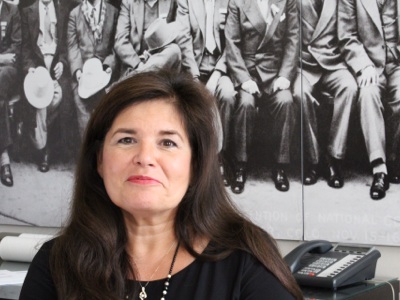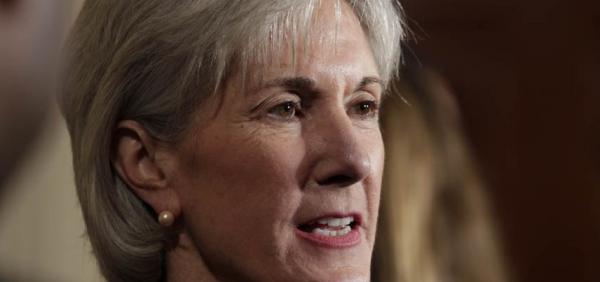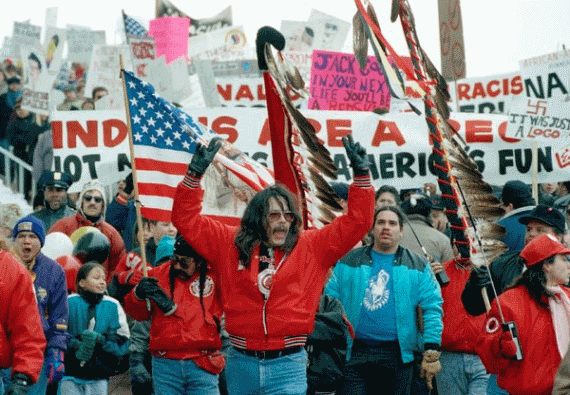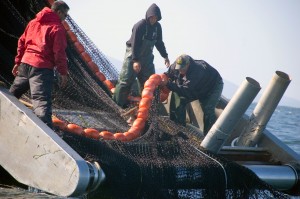
Source: Indianz.com
There has been much controversy about the Affordable Care Act, what some call Obamacare. The politics are beyond intense. And those computer glitches are making it virtually impossible for people to enroll.
But for American Indians and Alaska Natives there is a whole different story to tell about the Affordable Care Act. Native Americans have a right to health care. This is a deal the United States made, a promise that including sending doctors to the tribes that signed treaties in exchange for peace and for titles to lands.
Promise or not, treaty or not, the entire history of healthcare in Indian Country has been defined by shortages. There has never been enough money to carry out that sacred bargain.
The modern Indian Health Service was created in 1955. And over the following decades, more clinics were built, more doctors were hired, and health care for Native people improved. Still, the agency never had enough money.
In 1965 when Medicare and Medicaid were enacted into law there wasn’t even consideration about how these programs would impact American Indians and Alaska Natives. The Indian Health Service could not bill the agencies for serving eligible services. Native Americans were essentially left out of that health care reform effort.
That history of shortages is critical context to understanding the Affordable Care Act. Because from the very beginning of the legislative process, the Affordable Care Act included Indian Country. This happened because a decision was made by tribal leaders to roll the Indian Health Care Improvement Act into the larger legislation.
“Let me tell you why it was different this time,” said Jacqueline Pata, executive director of the National Congress of American Indians. For nearly twenty years tribes urged Congress to reauthorize the Indian Health Care Improvement Act. Then the discussion began about a health care reform.
“We were sitting at an NCAI board meeting, tribal leaders around the table, and said we really have to engage in this health care debate this time around. There were those that said, “no, let’s stay where we are,’” she said. But former NCAI President Jefferson Keel knew the health care industry and he agreed with the broader approach. “So we immediately started to look at the overall health care bill, working with the members of Congress, to be able to find all those other places that it was important to insert ‘and tribes.’ So not only did we get Indian Health Care (Improvement Act) reauthorized permanently. But we were able to get provisions into Medicaid, we were able to get the tax exemption (for tribes that purchase insurance for members), we were able to include a lot of places where tribes should have been considered but probably wouldn’t have been if we didn’t integrate those two pieces of legislation.”
YouTube: Episode 1 of Treaty or Not? The Affordable Care Act & Indian Country
But there still is a question of why? Why American Indians and Alaska Natives need insurance of any kind when there is a treaty right, a statutory call to healthcare, that transcends this latest national experiment? Then recall the long history of shortages. The Indian health system has never been adequately funded, probably less than half of the appropriation that would bring about some sort of parity with other federal health systems.
The main idea in the Affordable Care Act is to require health insurance for all Americans because that lowers the cost for everyone, the so-called “mandate.” But American Indians are exempt from that mandate (even if the Indian health system does not count as insurance). So the way that exemption works, this year at least, is that American Indians and Alaska Natives will have to fill out forms for an exemption (once granted, it’s a lifetime deal). The good news here is that the whole website mess does not apply.
Then insurance itself is a complicated idea for Indian Country. What is called “third party billing” has been a small, but growing part of the financial resources for the Indian health system.
You see there is this odd American idea that links health insurance to our jobs. That’s how most Americans now get their health care — and will continue to do so even under the Affordable Care Act. But that one element is a big difference for Indian Country. Only 36 percent of American Indians and Alaska Natives have insurance purchased through work — that’s half the rate for most Americans — and 30 percent of us have no insurance at all.
But the Affordable Care Act is designed to change that. The new law offers incentives for people to get health insurance coverage at a reduced rate or even free. So why would American Indians and Alaska Natives purchase insurance?
“The Indian health system is only funded at about fifty percent,” said Valerie Davidson, senior director of legal and intergovernmental affairs at the Alaska Native Tribal Health Consortium in Anchorage.
“Anybody who’s ever been to a tribally-operated program or an urban program or an IHS facility, they know the services are limited. Unfortunately there isn’t enough funding. And so we rely on those third-party reimbursements (or insurance) to make those ends meet, to be able to keep the clinic’s lights on.”
She said the Affordable Care Act is an opportunity to make sure that American Indians and Alaska Natives have additional health care coverage. “So the things that the Indian Health Service funding typically doesn’t pay for is medically-necessary travel (unless it’s considered life or limb). So generally an emergency is taken care of,” Davidson said. “But it may not cover routine travel.” She said an example would be people who live in a community without a dentist — so the only available option requires travel. “Having that extra coverage could cover the medically-necessary travel,” she said.
Insurance that covers medical travel is one reason for individuals to purchase insurance — and there are other reasons as well. A diabetes patient who’s insured would get better care, more access to the wider selection of procedures and drugs.
But the problem is that the rules for the insurance marketplaces are doubly complicated for Indian Country. Who’s eligible? How much? And, just what are the rules?
Indian Health Service Director Yvette Roubideaux said answers will be found in every clinic, where you get your care now. “I don’t know,” she said, “is not an acceptable answer.”
But if the law is to be successful in Indian Country there has to be a greater effort at educating people about their options. The Government Accountability Office recently said it will take a major campaign to make that so. That means hiring more people, lots of people, to help Native Americans navigate through this maze.
But there are already models for this kind of campaign. The Census was effective with “Indian Country Counts.” And, as NCAI’s Pata points out, last year’s efforts to register Native American voters is the kind of operation that’s needed. “It’s so critically important that tribes get engaged in giving direction. Tribes need to think about this the way they would with their Native Vote campaign,” she said. “They need to be able to have sign-up fairs, where they can actually answer the questions.”
So will American Indians and Alaska Natives sign up for insurance? If that happens it won’t because of a working web site in Washington, D.C. It will happen because every clinic in the Indian health system explains to patients why insurance matters and how it means more money for all.
The most important insurance program for American Indians and Alaska Natives is Medicaid.
When the Supreme Court upheld the Affordable Care Act, the headline was that the majority affirmed the individual mandate. But the second part of that decision is that the United States could not force all 50 states to expand Medicaid coverage.
Medicaid is a particularly complex government insurance program for the poor. But what makes Medicaid so important is that its funding source is not appropriated by Congress. It’s an entitlement. If a person is eligible, then the money is there. Automatically.
Medicaid is also a partnership between a state government and the federal government.
But for American Indians and Alaska Natives, it’s an odd marriage. The federal government picks up 100 percent of the cost. But even though the bills are paid for by Washington, each state sets the rules for eligibility about who and what will be covered.
The result is that about half of Indian Country will be covered by states where Medicaid is expanding — and the other half live in states that have said no. This means that hundreds of thousands of American Indians and Alaska Natives will lose out on expanded insurance coverage that the Affordable Care Act was designed for.
So this means that the Indian health system will essentially be split in two. There will be more money for health care in states where Medicaid expands — and less in the states that have said no. In the “no” states that will be even less money for an already underfunded Indian health system.
Watch North Dakota and Arizona. Two conservative, red states, looked at their numbers — and especially their Native American population — have already decided to expand Medicaid. If the program works in those two states, then other states with large native populations, might join the party. But if not, there is always the possibility that Indian Country could be treated as a 51st state. (The Affordable Care Act even begins that consideration by allowing a beta test of sorts for the Navajo Nation.)
The numbers are huge. The GAO says: “Excluding those already enrolled, potential new enrollment in Medicaid could exceed 650,000 out of 2.4 million (27 percent) for those identifying as American Indians and Alaska Natives alone, and almost 1.2 million out of 4.8 million (25 percent) for those identifying as American Indians and Alaska Natives alone or in combination with another race.”
NCAI’s Pata says the Affordable Care Act also “makes it really important for tribes, as they look at their health care clinics, to think of them as businesses. And not just as businesses for their tribal members, but businesses for their community, particularly the smaller tribes.”
The flip side of that idea is a shift in power from the clinic to the individual. Once someone has insurance, either through Medicaid, the marketplace exchanges, or another program, then that person might not choose to remain in the Indian health system.
“That’s the other reason why tribes need to think of (clinics) as businesses,” Pata said.
In some ways the urban Indian clinics are ahead of the Affordable Care Act. Because so little IHS funding — about one percent — goes to urban clinics, they have had to act like business enterprises.
“The greatest challenge is balancing the historical manner in which we have provided services, which have been geared around the needs of the population, with the growing demand for reaching out to other communities to get sufficient volumes to get the revenues to keep the doors open,” said Ralph Forquera, executive director of the Seattle Indian Health Board. “That balance of natives to non-natives … has always been a complex thing to manage. Some clinics around the country have seen a dramatic drop-off in their Indian participation in their clinics because the economics just don’t work. They need to go out and seek non-native people and enroll them in their programs to keep the doors open.”
He adds that Seattle has been fortunate because it’s been able preserve that balance.
But Seattle has a larger population base, something that is not true in all communities.
“It does change the dynamic,” Forquera said. “Those are some huge challenges but they are not unique to us. The tribal community clinics may be in even more challenging situation if the dynamic changes.”
He said one thing to watch is a shift away from fee-for-service payments to clinics to a more managed-care approach. For managed care to work, there has to be a larger scale, more people. “In order to be able to work in that kind of environment, you have to enroll large numbers of individuals in order to generate the revenues to pay for staff and the facilities, all the things necessary to provide the services” Forquera said. That concept could make it more difficult for Indian programs with small numbers of people.
But the Indian health system does have one huge advantage over the larger health system — and that’s underfunding. Underfunding as an opportunity? Yes. Because it’s already led to smarter, more efficient ways of operating. It’s made innovation possible.
Alaska’s dental health therapist program is a great example of that kind of thinking. “We recognized that we’re not going to be able to have a dentist in every community,” said Davidson. “So we developed a two-year training program to be able to train people to provide mid-level oral health care. Most of their work is in prevention, but they can also do exams, develop treatment plans, they can do fillings, and simple extractions.”
The payoff? “The tribal health system has been innovative by necessity. And a lot of these programs can and have served as models for the rest of the United States,” Davidson said. “Tribes have shown time and time again that we are a really good investment. We can do more with less. If you take a look at what we are able to do today, compared with what we were able to do before we were able to assume ownership of our own system, the difference is tremendous. We can take innovation to a whole different level.”
So will the Affordable Care Act work?
It’s too early to know that answer. But this is not new in history. More than sixty years ago the Bureau of Indian Affairs ran health care programs. It was awful. One doctor wrote: All we really need are good doctors, facilities and pharmaceuticals. I am weary.” Congress finally got the message in 1955 and created the Indian Health Service. But that shift — as dramatic as the one today — worked and it significantly improved the quality of life for American Indians and Alaska Natives.
Mark Trahant is the 20th Atwood Chair at the University of Alaska Anchorage. He is a journalist, speaker and Twitter poet and is a member of the Shoshone-Bannock Tribes.
















